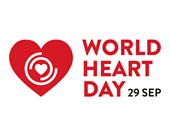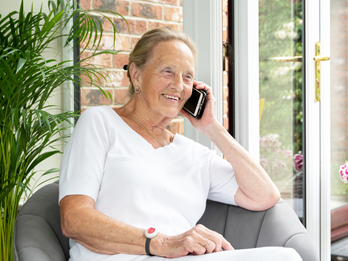Telehealth and Cardiovascular Disease
Sep 29, 2022
Cardiovascular disease (CVD) remains the UK’s, and indeed the world’s, number one killer according to the World Health Organisation. There are a number of conditions associated with CVD, e.g.
- Hypertension
- Heart failure
- Coronary heart disease
- Abnormal heart rhythms (Arrythmia)
Many factors can contribute to developing CVD, however, it is possible to reduce the risks, live a healthier life and manage these conditions with some important lifestyle changes and the support of a Healthcare Team and technology.
Telehealth, also known as remote patient monitoring, has been around for some years now and its use continues to increase. The Covid-19 pandemic has resulted in commissioners of services and healthcare professionals having to think differently about services, look for ways to continue to have contact with patients, and monitor and manage a variety of medical conditions including CVD. As a result, the uptake of telehealth (also known as remote patient monitoring) has accelerated rapidly, enabling remote care, and reducing the risk of infection for patients and healthcare teams alike.
How can telehealth help patients?
Telehealth enables patients to monitor their medical condition at home using devices which provide information to their healthcare team, e.g.
- Blood Pressure Machine to monitor blood pressure and pulse
- Pulse Oximeters to monitor oxygen levels
- Weighing Scales to monitor any fluctuations in weight
- A set of simple questions to assess symptoms and wellbeing
- Giving simple information or short videos to help patients understand their condition better
Patients work with healthcare professionals who, with the support of Tunstall, can develop a tailored health programme to suit their needs and help them to maintain or improve their medical condition and understand it better.
Telehealth can help patients by giving them the support to understand how their condition affects them, and can assist them by giving them the confidence to maintain their independence and make good decisions about their health.
It also supports their healthcare team, by providing regular vital signs and symptoms information. This enables them to monitor patients’ conditions without the need for them to attend the surgery for unnecessary appointments. It is also enables them to detect any changes in a patient’s condition at an early stage, and adjust the treatment plan accordingly before their condition worsens. This reduces anxiety and distress for the patient, and can eliminate the need for an urgent appointment, home visit or admission to the hospital.
How can telehealth support clinicians?
Telehealth offers an effective means of delivering care for patients with Long Term Conditions such as Cardiovascular Disease/ Heart Failure in their own homes. This has a number of benefits for both patients and clinicians alike e.g:
- Helps to improve the quality of life for patients and empowers them to take more control over their own health by increasing knowledge and confidence to manage their own condition
- Supports clinicians in identifying patients who may be showing early signs of deterioration from monitoring trends such as changes in vital signs such as blood pressure, oxygen saturation, body weight, increase in breathlessness.
- Supports prioritisation of workloads enabling patients to be contacted quickly and adjustments to treatment plans made if required
- Increases concordance with medication regimes
- Avoids the need for urgent or unplanned hospital admissions and visits to the emergency department, thereby reducing the overall cost of healthcare for this group of patients
- Decreases the number of unnecessary visits to the GP surgery
- Enables ongoing remote care during the pandemic



